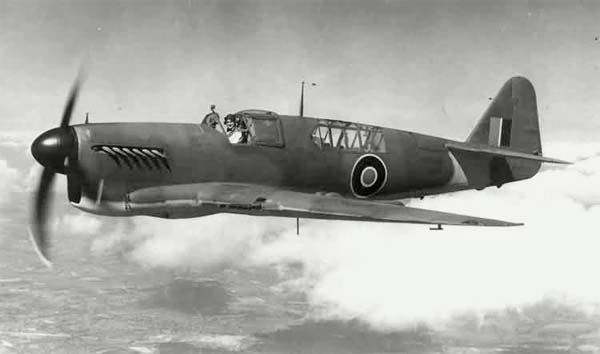Fairey Firefly History
The fearsome Fairey Firefly was the Royal Navy’s most capable two-seat fighter of World War II. It was the first British plane to overfly Japan and later saw service during the Korean War.
Designed to fulfil Naval Specification N.5/50, the Fairey Firefly arose from the need to replace the relatively modern yet obsolete Fulmar two-seat fighter. Conceived early in 1940 as an extremely advanced 2-seat Fleet fighter, the Fairey Firefly saw comparatively little of its total squadron service during World War 2, but it was to remain a standard Fleet Air Arm (FAA) type, in much-altered for, until the late 1950s.
The prototype (Z 1826) first flew in December 1941 and greatly resembled the earlier machine. The Firefly was a low-wing, all-metal monoplane, with folding wings for carrier storage. The pilot sat up front near the leading edge while the radio operator/observer was located some distance aft. Like the earlier Fairey Barracuda, it employed broad Youngman flaps on the wings’ trailing edges, and these were mechanically recessed into the wing when not in use. The powerful Rolls-Royce Griffon 61 engine also required a large “chin” radiator that gave the craft a distinctly pugnacious profile. Tests were entirely successful, and the Fairey Firefly exhibited lively performance that belied its size. Three further prototypes were completed, and deliveries of production Firefly F Mk Is began in March 1943, although it was July 1944 before the type became operational, with No 1770 Squadron (HMS Indefatigable), in the attacks upon the German battleship Tirpitz. The Fairey Firefly also harassed Japanese aircraft and ground installations throughout the East Indies, and in July 1945 a Firefly became the first British aircraft to overfly Tokyo.
Four hundred and twenty-nine Fairey Firefly F Mk Is, built by Fairey and Gerneral Aircraft Ltd, were followed by three hundred and seventy-six FR Mk Is officially designated as fighter-reconnaissance aircraft carrying ASH detector radar. During production of the Mk I series, modifications included a revised front cockpit hood, fully faired gun barrels and, from the four hundred and seventy-first aircraft onward, substitution of the 1,765 hp Griffon XII engine. Meanwhile, thirty-seven examples had been completed of a night fighter model, the NF Mk II, with twin leading-edge fairings housing the scanners of their AI radar, and a slightly longer fuselage. They were superseded by the NF Mk I, with an improved radar carried in a single under-nose pod but otherwise structurally similar to the other Mk Is.
The proposed Fairey Firefly III was abandoned, after one aircraft had been tested with a Griffon 61 series engine, in favour of the Fairey Mk IV which, with a 2,330 hp Griffon 72, was flown in 1944. This version was further modified in 1945 and fought in Korea with the Royal Navy and Australian forces. Successive modifications kept this craft in frontline service as an antisubmarine aircraft until the appearance of the Fairey Gannet in 1956.
Fairey Firefly Specifications
| Aircraft Type: |
| fighter |
| Dimensions: |
| wingspan: 44 ft, 6 in |
| length: 37 ft, 7 in |
| height: 13 ft, 7 in |
| Weights: |
| empty: 9,750 lb |
| gross: 14,020 lb |
| Power plant: |
| 1 × 1,730 hp Rolls-Royce Griffon IIIB liquid-cooled in-line engine |
| Performance: |
| maximum speed: 316 mph |
| ceiling: 28,000 ft |
| maximum range: 1,300 mi |
| Armament: |
| 4 × 20 mm calibre cannons |
| 2,000 lb of bombs or rockets |
| Operational Use: |
| 1943–1956 |









